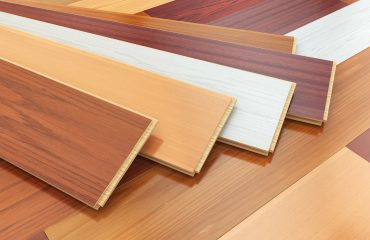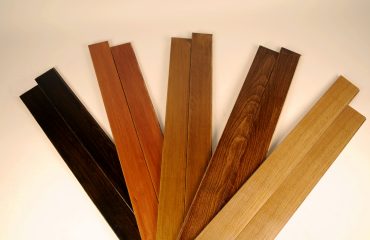
When it comes to adding warmth and character to a home, there’s nothing quite like hardwood flooring. The natural beauty and durability of hardwood make it a popular choice for homeowners all around the world. However, with so many options available, choosing the right hardwood flooring for your home can be a daunting task. In this blog, we’ll guide you through the process of how to choose hardwood flooring that suits your needs, lifestyle, and budget.
List of Contents
How to Choose Hardwood Flooring
Consider the Style of Your Home
The first thing to consider when deciding how to choose hardwood flooring is the style of your home. Different hardwood species and finishes complement different home styles. For instance, if you have a traditional home with lots of architectural details, dark and rich-colored hardwood, like mahogany, cherry, or walnut, can add an elegant and classic touch to the space. If you have a modern or contemporary home, you might want to opt for a lighter and more minimalist hardwood, like maple, ash, or birch.
Choose the Right Hardwood Species
Once you’ve identified the style of your home, the next step is to choose the right hardwood species. There are many different hardwood species to choose from, each with its unique characteristics and benefits. Some popular hardwood species include:
- Oak – Oak is a durable and widely available hardwood species that comes in a range of colors, from light yellow to dark brown. It’s an excellent choice for high-traffic areas because it can withstand wear and tear.
- Maple – Maple is a light-colored hardwood that is known for its durability and resistance to scratches and dents. It’s a great option for busy households with pets and kids.
- Walnut – Walnut is a dark and rich hardwood species that is highly prized for its natural beauty and unique grain patterns. It’s an excellent choice for formal living areas and bedrooms.
- Hickory – Hickory is a durable hardwood species that is known for its strength and resistance to scratches and dents. It’s an excellent choice for busy households with high foot traffic.
Consider the Hardness and Durability
The hardness and durability of hardwood flooring are important factors to consider when choosing the right hardwood species for your home. The Janka hardness scale is used to measure the hardness of different hardwood species. The higher the number, the harder the wood.
If you have a busy household with pets and kids, you might want to opt for a hardwood species that scores higher on the Janka scale. Hardwood species like Brazilian Walnut, Brazilian Cherry, and Hickory have a high Janka rating and are known for their durability and resistance to scratches and dents.
However, keep in mind that harder woods may also be more difficult to work with during installation, and can be more expensive than other hardwood species. So, it’s important to balance durability and cost when making your decision.
Consider the Color and Finish
The color and finish of your hardwood flooring can significantly impact the overall look and feel of your home. Darker hardwoods tend to make a room feel more formal and traditional, while lighter woods can make a space feel brighter and more modern.
In addition to color, the finish of your hardwood flooring is also an essential consideration. There are several different finishes to choose from, including:
- Glossy Finish – Glossy finishes offer a high level of shine and reflectivity. They can make a room feel more formal and add an element of luxury to the space. However, they also tend to show scratches and scuffs more easily.
- Matte Finish – Matte finishes offer a more natural and understated look. They tend to hide scratches and scuffs better than glossy finishes and are a great option for high-traffic areas.
- Satin Finish – Satin finishes are a middle ground between matte and glossy finishes. They offer a low to medium level of shine and are a great option for a range of different home styles.
Consider the Installation Process
The installation process of hardwood flooring can vary depending on the type of flooring you choose. Solid hardwood flooring requires nailing or stapling to a wooden subfloor, while engineered hardwood flooring can be installed over a range of surfaces, including concrete and existing flooring.
It’s also essential to consider the time and cost of installation. Solid hardwood flooring can take longer to install than engineered hardwood flooring and may require additional subfloor preparation. Additionally, solid hardwood flooring can be more expensive to install, as it requires more materials and labor.
Choose a Reputable Installer
Once you’ve chosen the right hardwood flooring for your home, it’s important to find a reputable installer to ensure that your new flooring is installed correctly. Look for installers with experience and positive reviews, and be sure to ask for references before hiring them.
Related Reading:
- How to Choose the Right Hardwood Floor Cleaner
- How to Prep for New Hardwood Flooring Installation
- Best Waterproof Engineered Hardwood Flooring: What You Need to Know
We hope this blog has illuminated how to choose hardwood flooring for your home with ease. Choosing flooring for your home can be a fun and rewarding process. By considering factors like the style of your home, the hardness and durability of the hardwood species, the color and finish of the flooring, and the installation process, you can find the perfect flooring for your needs, lifestyle, and budget.
Still wondering how to choose hardwood flooring? Let us help you. At Dublin Carpet, we have a wide range of hardwood flooring options to choose from, and our knowledgeable staff is always happy to help you find the right flooring for your home.



